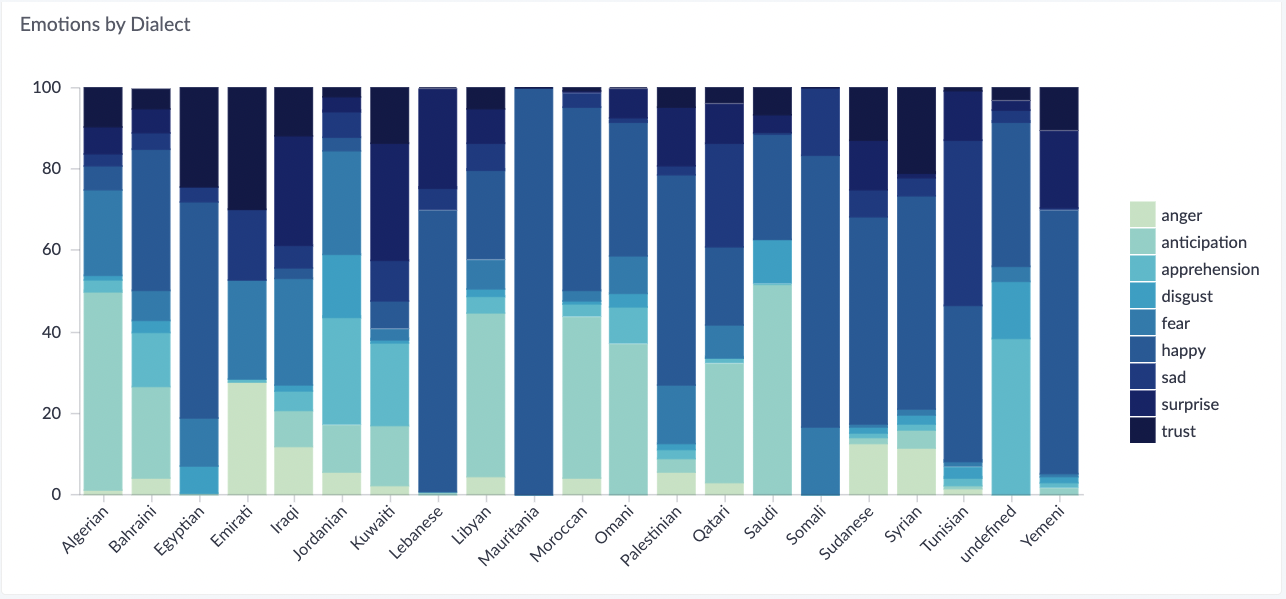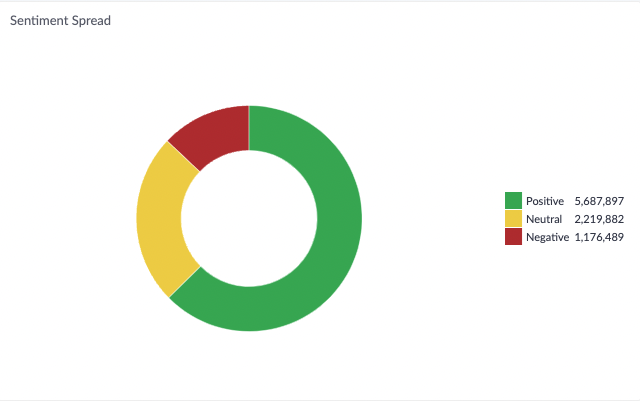The role of the native Arabic language in sentiment and emotion analysis.

Many available tools use only Modern Standard Arabic, leading to missed conversations and English translations. Read and learn from our blog.
Get the complete consumer intelligence report
Download our comprehensive guide with detailed insights, case studies, and actionable strategies for your industry.
Join our community • Valuable insights • Unsubscribe anytime
Arabic Sentiment Analysis (ASA)
Arabic is one of the most spoken languages in the world. Despite this, Arabic speakers receive very little attention when it comes to sentiment analysis. Of course, as the second hardest language to learn, this ranks Arabic among the most complex languages in the world. These are more reasons why careful attention must be given to Arabic speaking consumers while performing a sentiment analysis. Sentiment analysis is the process of identifying and categorizing the opinions that have been expressed by consumers in a piece of text to determine the writer’s intent about a certain topic or product. Now, there is the native Arabic dialects (of which there are dozens), and there is modern standard Arabic. When trying to perform sentiment analysis, most tools and services used for this purpose perform this translation in modern standard Arabic. The problem with this method is that only 30% of the internet is in modern standard Arabic. The rest, 70% is in Arabic dialects, and because most tools do not translate in this dialect (or even pick it up), the original intent of a lot of consumers is not known or miscalculated. Some of these tools even translate this language to English and measure the sentiment and emotion of the writer in the English language, thereby omitting a lot of surrounding information from the conversation. The result of this is a negative impact on the sentiment readings and the emotions of the writer.
The rest, 70% is in Arabic dialects, and because most tools do not translate in this dialect (or even pick it up), the original intent of a lot of consumers is not known or miscalculated. Some of these tools even translate this language to English and measure the sentiment and emotion of the writer in the English language, thereby omitting a lot of surrounding information from the conversation. The result of this is a negative impact on the sentiment readings and the emotions of the writer.  The Arabic language has a unique textual and phonetic structure. Every word has either a positive or a negative meaning. Linguistic texts in Arabic have several types of expressions each giving either an explicit or implicit meaning. Therefore, from the meanings of the words written, a person can tell the style of the writer and can understand the feelings that the writer is trying to portray. A slight change in the position of an articulation point on a character, or the duration of a vowel’s movement, can alter the entire meaning of a word. This is why one must be very careful when carrying out sentiment analysis, especially in the Arabic language.
The Arabic language has a unique textual and phonetic structure. Every word has either a positive or a negative meaning. Linguistic texts in Arabic have several types of expressions each giving either an explicit or implicit meaning. Therefore, from the meanings of the words written, a person can tell the style of the writer and can understand the feelings that the writer is trying to portray. A slight change in the position of an articulation point on a character, or the duration of a vowel’s movement, can alter the entire meaning of a word. This is why one must be very careful when carrying out sentiment analysis, especially in the Arabic language. The bridge between a brand and a consumer
As a brand looking to satisfy your Arabic customers completely, it is pertinent for you to understand their original intent. The only way you can do this is by correctly translating their language. This can only be achieved by using tools that run models in native Arabic dialects. Luckily, some tools perform this service accurately. When searching for a tool to use for your sentiment analysis, one of the vital factors to consider is the expertise level of the developers of the tool. As the need for original Arabic dialect translation continues to rise, more developers will plunge into the sector in a bid to make money under the guise of providing value. To avoid getting poor value for your money, you must choose your provider carefully. D/A’s Sila tool has been a sensation since its launch in 2018. Sila has a mindset that does not just listen but listens to understand. Using Arabic native AI and Natural Language Processing models, the tool can deliver original and accurate results. The team is constantly open to growth. Having over 40 million posts since 2018 exposes them to a lot of insights into the most recent challenge. If there is an issue, you can rest assured that this team is aware of it and is working on the best solutions. With a full understanding of the Arabic dialect, a lot of data at their disposal, and Arabic native AI, you will not have to worry about incorrect translations. Sila bridges the gap between you and your consumers, making it easy for you to connect with them and meet their needs, eventually building trust between you and your consumers.
With a full understanding of the Arabic dialect, a lot of data at their disposal, and Arabic native AI, you will not have to worry about incorrect translations. Sila bridges the gap between you and your consumers, making it easy for you to connect with them and meet their needs, eventually building trust between you and your consumers.
Related Articles
Continue exploring insights on similar topics
From Bento Boxes to a $3.1B opportunity: how TrueTrends decoded the school lunchbox revolution
Explore how Sila's TrueTrends uncovered 2025 school lunchbox trends, cultural fusion meals, and a $3.1B growth opportunity for brands.
The MENA Trend Effect: Watch closely, it grows fast.
MENA Trends: How Dubai’s pistachio chocolate trend shows MENA’s power to create, amplify, and globalize what’s next in food, and culture.
Consumer Analysis: What to Expect This Eid Al Adha in MENA Markets
Discover Eid Al Adha 2025 consumer trends in MENA. $300B GCC market growth, 41% online shoppers, and key spending patterns revealed
Ready to Transform Your Consumer Intelligence?
Discover how Sila's AI-powered platform can help you understand your customers better and drive growth.